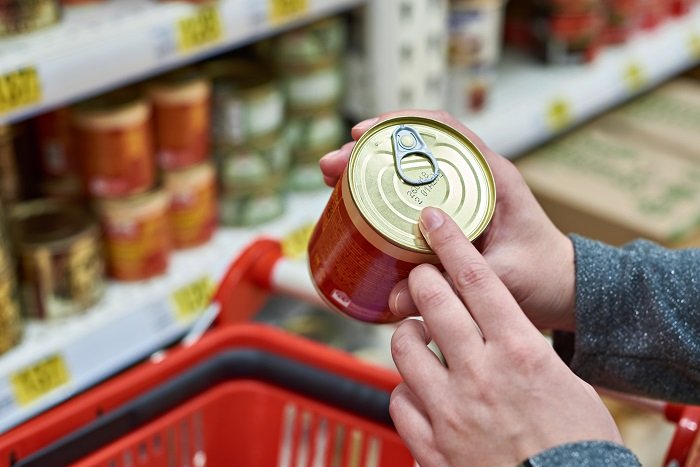The food industry is thriving more than ever, with demand for food products at an all-time high. Whether you’re running a restaurant or involved in providing food supplies, packaging is a crucial part of the business. It protects food from damage, keeps it fresh, and informs consumers about what they buy. Moreover, the packaging and design are also used as promotional material where you can include your brand name, logo, and other marketing materials.
Because of the crucial role it plays, it’s important to make sure your food packaging has the right design and function. Remember, you must ensure that it fits the product and is easy to open and close. The packages may be exposed to elements such as water, hooks, and others during transit, damaging them and the contents in them. Hence, you need to keep these factors in mind.
The end user must get the food in good condition, and the package must also raise brand awareness and recognition for the business. Therefore, if you are looking for a way to package food properly, here is a practical guide:
Know The Different Types And Methods Of Food Packaging
To choose the best type of packaging for your food product, it’s important to know what your options really are. Below are some of the most popular types and methods for food packaging:
- Thermoform Packaging
Thermoforming is a procedure that involves heating a plastic sheet and then shaping it into a 3D shape. The process is ideal for different packaging types of foods, such as cookies, chocolates, and others. Thermoforming is used to create different types of packaging, including trays, clamshells, blister packs, and others.
This type of packaging is also used to create customized packages. For instance, you can have a package that has a built-in tray for holding different items such as forks and knives. This way, the user doesn’t need to look for these items separately. There are many thermoform packaging benefits, such as:
- Economical: Thermoforming is a cost-effective way to create packaging. The process doesn’t require much labor, and the materials are also readily available.
- Versatility: You can use thermoforming to create different types of packaging. As mentioned earlier, this packaging can be used to create clamshells, blister packs, and others.
- Fast: The thermoforming process is relatively fast, and you can create large quantities in a short period.
- Protects The Product: Thermoform packaging offers excellent protection for food products. The packages are strong and durable and can withstand different types of damage.
- Aseptic Packaging
Aseptic packaging is a type of food packaging that doesn’t require refrigeration. The process involves sterilizing the food and packaging it in a sterile environment. Aseptic packaging is ideal for foods that need a longer shelf-life, such as milk, juices, and others. During this process, the food is placed in a sterile container and then sealed to prevent contamination. Aseptic packaging has several benefits, such as:
- Preserves Food: Aseptic packaging helps preserve the food for a long time. The sterilization process ensures that the food is free of microorganisms, increasing its shelf-life.
- Convenience: Aseptic packaging is very convenient, especially for foods that need to be stored for a long time. You don’t need to worry about refrigeration and the food can be easily transported.
- Safe: Aseptic packaging is a safe way to package food. The sterilization process ensures that the food is free of microorganisms, decreasing the risk of food poisoning.
- Vacuum Packaging
Vacuum packaging is a method wherein air is removed from the package. This process is done to extend the shelf life of the food. Vacuum packaging is ideal for foods prone to oxidation, such as meat, cheese, and others. During the vacuum packaging process, the food is placed in a bag, and the air is removed using a vacuum sealer.
By preventing oxidation of food, it helps prevent microorganisms such as bacteria from growing. Vacuum packaging also ensures the preservation of food as it helps prevent oxidization and extend shelf life.
- Sustainable Packaging
Sustainable packaging has been gaining more traction lately due to environmental efforts and awareness. This type of packaging is made from sustainable materials, such as recycled paper, bamboo, and others. Sustainable packaging is beneficial for the environment since they degrade faster than other materials—making them less likely to contribute to pollution.
Additionally, many customers today are environmentally conscious and are willing to pay more for sustainable packaging. This means that not only will this type of packaging ensure the safety of your food items, but it also provides revenue opportunities. Some of the reasons to use sustainable packaging include the following:
- Cost-Effective: Sustainable packaging is often more cost effective than traditional packaging. This is because the materials used are often cheaper, and it doesn’t require as much energy to produce.
- Positive Social Impact: Sustainable packaging often has a positive social impact as it helps reduce environmental damage and even encourages sustainable ways of disposal.
- Easily Sets You Apart From Competitors: Many customers these days will take notice when a business is practicing sustainable ways of manufacturing products and doing business. So, if you’re using sustainable packaging, this can catch their attention—making you stand out in the highly competitive food industry.

Things To Consider When Choosing The Right Packaging Material
The type of packaging material that you use will also affect the safety of food products. This is because some materials are more likely to contaminate food than others. For example, plastic is more likely to leak chemicals into food than glass.
Additionally, some packaging materials are more likely to cause environmental problems. For example, plastic packaging is a major source of pollution, and it’s important to choose eco-friendly packaging materials. Some of the things that you need to consider when choosing packaging materials are:
- Food Safety: Food safety is the most important factor in food packaging. This means that the material you choose should less likely contaminate the food. Also, you need to consider how best the material will protect the food. For example, if the food should be stored in a dry place, then the material you choose should be water-proof to help prevent moisture damage.
- Environmental Impact: As mentioned, some packaging materials are more likely to cause environmental pollution than others. Therefore, when choosing packaging materials, you need to consider the environmental impact of the material. For example, if you’re selling food in a country with a hot climate, you must choose materials that won’t release toxins when exposed to heat.
- Cost: The cost of packaging materials will also affect your business’s bottom line. This is why you need to consider the cost of the material before choosing it. Ideally, the cost of the packaging material should be very low to not eat into your profits. However, this doesn’t mean that you should settle for low-quality materials in a bid to save on costs.
- Nature Of Food: Food can be processed or sold fresh. Processed food can be stored in different packaging materials, but fresh food needs to be packed more carefully to help it retain its freshness. For example, if you’re selling fresh fruits and vegetables, you must choose packaging materials that will allow the food to breathe. On the other hand, processed foods can be stored in airtight cans.
- Durability Of The Materials: Different packaging materials have different strengths and can withstand varying levels of stress. Therefore, it’s important to know what material is durable enough to keep the food safe during transportation and storage. For example, if you’re packaging fragile items such as eggs, you need to use materials that will protect them from breaking.
- Ease Of Use: The packaging material you choose should be easy to use. This is because ease of use will affect efficiency and function. For example, if you’re using a difficult material to work with, it will take longer to package the food products. On the other hand, the packaging process will be very fast if you’re using a material such as sacks and bags for grains.
- Shelf Life: The shelf life of food products is also determined by the packaging material. This is because some materials are better at preserving food than others. For example, if you’re selling canned goods, you need to use aluminum material that won’t rust or corrode to prevent the food from going bad. However, if the food’s shelf life is only a few days or weeks, then you can use plastics to store them.
- Disposal: Ultimately, your customers are responsible for properly disposing of the excess packaging that you use for your product. However, it’s important to consider packaging material that you know would be fairly easy to dispose of and would not cause many problems for the environment. You may even want to consider types of packaging that may be recycled as a food tray or container so your customers can still reuse them even after consuming your product.
Transportation Needs
Once your products are packed and ready, they’ll have to be transported to resellers, distributors, or customers. This is why you need to consider the transportation needs when packaging your products.
For example, if you’re selling frozen food, you must ensure that the packaging can withstand the rigors of freezing and thawing during transit and storage. This means that you need to choose packaging materials that are strong and durable.
You should also consider how the food products will be stored or arranged during transportation. If they are piled on top of each other, you need to ensure that the packaging can withstand that weight and protect the food from damage.
Follow Regulations On Labeling
Labeling is a crucial element of product packaging, especially in the food and pharmaceutical industries. This is because it helps provide information about the product, such as the ingredients, nutrition facts, allergens, and others.
In many countries, there are regulations on product labels and food handling for safety and transparency purposes. Proper labels help inform your customers and avoid unnecessary lawsuits.
Some of the things that you need to consider when labeling your products include the following:
- Type Of Information To Be Included: There are regulations on the type of information that needs to be included on food labels. This includes the product’s name, ingredients, nutrition facts, expiration date, and others.
- Formats: The label must be in a format that is easy to understand. This means that it should be in a language and font that is easy to read.
- Placements: The label must be placed where it can be easily seen. This means that it should be on the front of the package and in a color that contrasts with the background.
By following these labeling regulations, you position yourself as a trustworthy and reliable source of information for your customers.
Customize Your Packaging
Safety and efficiency come first, but don’t forget about the design of your packaging as well. Remember that your packaging reaches customers and stores. That gives you the perfect opportunity to introduce your brand to a wider community. So, don’t forget to customize your packaging in a way that best reflects your brand. This means you have to customize your packaging using official business colors, logos, and other branding elements.
Additionally, you need to ensure that your packaging is easy to identify. This means that it should be unique and stand out from the competition. This will help your target customers easily identify your products on the shelves. You can achieve this by using different shapes, sizes, and materials for your packaging.
Customizing your packaging helps create a unique identity for your business, promotes brand recognition, and will let you market your products more effectively.
Conclusion
When choosing the right packaging material for your food business, there are many factors to consider. However, the most important factor is food safety. When your food is prepared, stored, transported, and handled well, this ensures that the product reaches the customer in good quality and condition.
Remember that food is going to be consumed, and mistakes in handling and storage can cause serious health issues. Therefore, you must choose a safe packaging material that won’t contaminate the food. Follow the guide above so you can pick the right packaging for your food business.


























